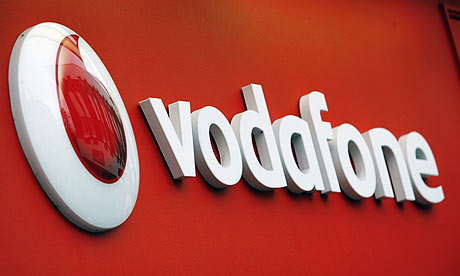Before mobile data and the internet became affordable, SMS was the primary texting medium. But users could only send plain text messages of limited length. After mobile data became affordable, we saw the rise of several messaging apps such as WhatsApp, Messenger, Signal, and iMessage. People switched to messaging apps for text messaging. Increasing SPAM via SMS also forced people to go away from using SMS. To replace SMS and provide users with a better texting experience, the RCS protocol was launched. RCS aims to replace SMS and provide most features that people enjoy in messaging apps such as WhatsApp. In this detailed article, I will talk about RCS and how it works.
What is RCS?
RCS (Rich Communication Services) messaging is a modern standard for messaging that aims to enhance the capabilities of traditional SMS (Short Message Service) and MMS (Multimedia Messaging Service). It provides a more feature-rich and interactive messaging experience, similar to instant messaging apps, while still maintaining compatibility with SMS.
RCS messaging enables users to send not only text messages but also high-quality photos, videos, audio clips, and other multimedia content, as well as enjoy advanced features such as read receipts, typing indicators, group chats, and more. It also supports advanced messaging features like location sharing, file transfers, and integration with other services.
RCS came into existence in 2008 but it has not experienced traction until recently. The primary reason was the slow carrier adoption. When Google entered the space, it managed to bring all the carriers on board. Google also acquired Jibe Mobile in 2015 to push RCS adoption.
How does RCS messaging work?
RCS messaging works by leveraging mobile data networks or Wi-Fi to transmit messages instead of relying solely on the traditional cellular network used by SMS. It requires support from both the sender’s and receiver’s devices, as well as the network carrier.
Here’s a simplified overview of how RCS messaging works:
a. Device support: To use RCS messaging, both the sender’s and receiver’s devices must support RCS. This typically requires having a compatible messaging app or the default messaging app that supports RCS. Google’s Messages and Samsung Messages apps support RCS.
b. Network support: The network carrier must also support RCS. They need to have implemented the necessary infrastructure and protocols to enable RCS messaging for their customers.
c. Registration and verification: When a user sets up an RCS-enabled messaging app for the first time, the app registers the user’s phone number with the RCS server provided by the carrier. The carrier verifies the user’s identity and activates RCS for that phone number.
d. Chat initiation: When a user wants to send an RCS message to another RCS-enabled contact, their device communicates with the RCS server to establish a connection. The RCS server checks if the recipient’s device supports RCS and if they are currently online.
e. Message transmission: Once the RCS connection is established, the sender’s device transmits the message data, which can include multimedia content, to the RCS server. The server then delivers the message to the recipient’s device through a similar process.
RCS messaging enables various advanced features. For example, read receipts inform the sender when the recipient has read their message while typing indicators show when the recipient is typing a response. Group chats allow multiple participants to communicate in a single conversation, and additional features like location sharing or file transfers can be integrated.
f. Fall back to SMS: If the recipient’s device or network does not support RCS, the messaging app can fall back to sending a traditional SMS message instead. This ensures that the message can still be delivered, although without the enhanced features provided by RCS.
RCS messaging improves the messaging experience by providing richer features and multimedia support, making it more comparable to popular messaging apps while retaining compatibility with traditional SMS.
RCS vs SMS
RCS differs from SMS in several ways. SMS works across all mobile devices and carriers since it is a universal standard. In contrast, RCS requires support from both the sender’s and receiver’s devices, as well as the network carrier. SMS operates solely on the cellular network, while RCS can leverage mobile data or Wi-Fi connections for message transmission
While SMS is limited to plain text messages, RCS supports the exchange of multimedia content. Users can send high-quality images, videos, audio clips, and other types of multimedia within their messages over RCS.
RCS also enables several advanced features that are not available in SMS. These features include read receipts, typing indicators, real-time feedback, group chats, location sharing, and file transfers. So, RCS aims to provide messaging app experience but works over the carrier network
Here’s a comparison table highlighting the main differences between SMS (Short Message Service) and RCS (Rich Communication Services):
| SMS | RCS | |
|---|---|---|
| Text Messaging | Supports plain text messages | Supports plain text messages |
| Unlimited message sizes | Not supported | Supports Unlimited message sizes |
| Multimedia Content | Limited support for images, | Supports high-quality images, videos, |
| videos, and audio | audio, and other multimedia content | |
| Group Chats | Not supported | Supports group chats |
| Read Receipts | Not supported | Supports read receipts |
| Typing Indicators | Not supported | Supports typing indicators |
| File Transfers | Not supported | Supports file transfers |
| Location Sharing | Not supported | Supports location sharing |
| Connectivity | Relies on cellular network | Relies on mobile data/Wi-Fi |
| Compatibility | Compatible with all mobile devices and carriers | Requires RCS support from both sender and receiver |
| Cost | Standard messaging rates may apply | Uses data connectivity, so additional data charges may apply |
Please note that the availability of specific features may vary depending on the messaging app, device, and carrier implementation of RCS.





